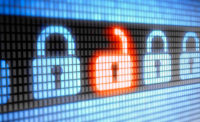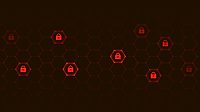As growing threats pose significant risks to a company's private information, intellectual property, financial assets and reputation, cybersecurity is a crucial aspect of any organization's operations.
Updating an organization’s cybersecurity strategy must start in the C-suite to ensure its effective integration into an overall business plan. By prioritizing cybersecurity at the highest level of leadership, companies can proactively address and assess security risks, allocate adequate resources, and develop a culture of security throughout the organization to foster a holistic, proactive approach to cybersecurity management.
The current environment
The state of corporate cybersecurity today is characterized by heightened awareness in the face of persistent business challenges and growing economic pressures. In recent years, the frequency of security breaches has elevated cybersecurity as a business imperative. Today, it is one that can no longer be ignored. Yet, despite increased accountability and investments, many organizations do not feel confident that their current systems effectively protect both individual employees and the enterprise on the whole.
As demonstrated by a string of high-profile breaches, passwords and legacy forms of multifactor authentication (MFA) continue to be the root cause of security issues for organizations. According to Verizon’s 2023 Data Breach Investigations Report, the primary attack vectors for breaches consist of stolen credentials and phishing — with 74% of all breaches involving the human element, with people being involved either via error, privilege misuse, use of stolen credentials or social engineering.
Since the early 1960s, passwords have been the primary method of authentication for consumers and enterprises alike; their ubiquity has proven them to be extremely difficult to replace. Passwords represent a fundamentally flawed first factor for authentication — resulting in weak security and poor user experience, which directly and indirectly impact the bottom line.
Enforcing complex password requirements is exhausting users, leading to password fatigue — a phenomenon where individuals resort to reusing the same passwords across accounts due to the stress caused by the need to remember an excessive number of passwords users are required to maintain for their various accounts. Password-related issues, such as forgotten passwords, account lockouts, resets or the need to regularly change passwords, are all significant inhibitors of employee productivity and cause frustration for employees.
To prevent these types of attacks, many corporate IT teams regularly conduct cybersecurity training or run mock phishing campaigns to test the cybersecurity acumen of their employees. Often, these trainings are glossed over or met with contempt. These tests have been proven to be ineffective in materially improving cybersecurity outcomes; alternatively, they lead to mistrust of an organization’s IT teams — whose purpose is to protect data and systems. Organizations cannot rely on or expect their employees to be the first line of defense against cyberattacks. Instead, they must implement modern systems that shift responsibility off the individual to the technology that is literally at their fingertips — thereby both strengthening defenses and freeing employees of cyber burdens.
Modern systems embrace security by design
The imperative for replacing passwords with stronger, simpler authentication has never been greater — and finally, organizations are hearing the call for change. According to Gartner, by 2025, more than 50% of the workforce will be passwordless. This shift may have monetary benefits to organizations — according to Forrester, the typical cost per password reset is $70, a figure that can grow exponentially within larger organizations.
Further, modern approaches to authentication save time and reduce the burden on IT support teams, freeing them up to focus on more critical initiatives, such as system automation and data management. By providing a frictionless user experience, employees can navigate systems and applications effortlessly, leading to increased satisfaction and overall productivity in the workplace. By default, passwordless authentication fosters a culture of security — the easiest option for users is also the most secure — giving employees the best of both worlds.
Cyber awareness must start at the top
Now that the passwordless movement is being embraced by security professionals and IT teams, C-suite leaders are in a position to ensure their organizations have the resources and support to make the transition to passwordless possible. IT teams are often seen as the ones who must bear the responsibility of cybersecurity — however, as a top business imperative, C-suite leaders are positioned to drive a culture of cybersecurity, setting the tone from the top down to establish a corporate ethos of security throughout the organization.
Companies that foster collaboration between the C-suite, IT teams and stakeholders create an environment of open communication, information-sharing and cross-functional teams that leads to a stronger security posture. However, it doesn’t stop there. As the cyber landscape is ever-changing, boardrooms need to continually assess and evaluate the effectiveness of their cybersecurity strategy.
Ultimately, elevating cybersecurity into the C-suite demonstrates a commitment to protecting valuable assets, maintaining customer trust and safeguarding the long-term success and sustainability of the organization. Despite ongoing challenges, the growing recognition of cybersecurity’s criticality and the concerted efforts being made by organizations hold promise for a more resilient and secure future.







